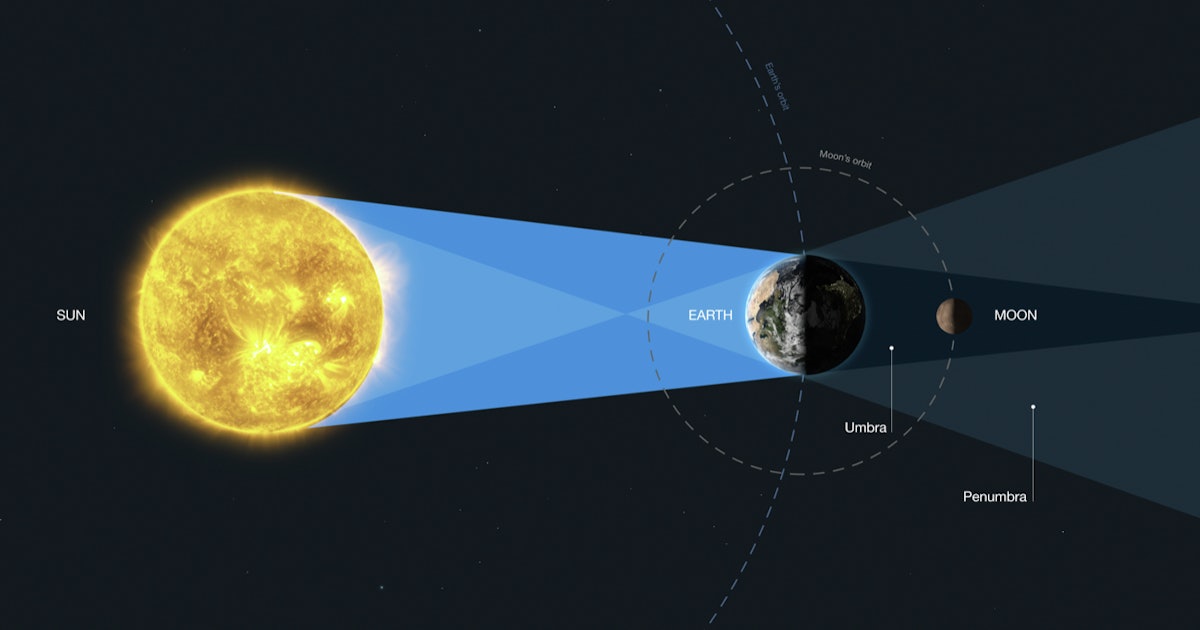
On January 20-21, 2019, planet Earth came between the Sun and the Moon, dropping the rocky body with its shadow into a total lunar eclipse.
The Moon may have appeared dim to us on Earth, but it served as a giant mirror from space.
NASA’s Hubble Space Telescope used the moon to reflect sunlight to observe the Earth’s atmosphere, thereby detecting the fingerprint of the planet’s ozone. By looking at the earth’s ozone, scientists can detect the conditions that life can host on other worlds outside of our own.
Hubble’s observations were detailed in a study published this week The Astronomical Journal.
Hubble was launched in 1990, and the space telescope has been roaming low-altitude debris ever since.
To observe the Earth’s atmosphere, the telescope did not look directly at the planet, but rather used the Moon to reflect sunlight that had passed through the Earth’s atmosphere during the entire lunar eclipse when the planet wedged between the moon and the sun.
Astronomers have used this method before, but this is the first time that a total lunar eclipse in ultraviolet wavelengths, located somewhere between visible light and X-rays, has been recorded by a space telescope.
This allowed the space telescope to detect the spectral fingerprint of ozone. Ozone is a gas that consists of three oxygen atoms in the Earth’s upper atmosphere, and serves as a protective shield against the ultraviolet radiation of the sun.
Ozone forms naturally as oxygen in the Earth’s atmosphere is exposed to strong concentrations of ultraviolet light, and acts as a blanket around our planet.
“Photosynthesis is perhaps the most productive metabolism that can evolve on any planet, because it is powered by starlight energy and uses cosmically abundant elements such as water and carbon dioxide,” said Giada Arney, a scientist at NASA’s Goddard Space Flight Center in Greenbelt, Maryland. , and co-author of the new study, said in a statement. “These essential ingredients should just be on habitable planets.”
While scientists search for signs of life on other planets, ozone serves as a strong indication of viability in other worlds.
“Finding ozone is important because it is a photochemical by-product of molecular oxygen, which is itself a by-product of life,” said Allison Youngblood, a researcher at the Atmospheric and Space Physics Laboratory in Boulder, Colorado, and lead author. of the new study, said in a statement.
However, finding oxygen alone is not an indication that life is overflowing on another planet, there are many other factors that you need to consider before astronomers can confirm an exoplanet’s confirmation.
As exoplanets pass ahead of their host stars, telescopes detect the signatures of chemicals in the planets’ atmospheres, while filtering certain colors into the star’s light. Smaller planets similar to Earth, however, have a thinner atmosphere, which makes this type of detection much more difficult.
Therefore, larger telescopes will be needed to look at smaller exoplanets.
The recent observations by Hubble of Earth are part of ongoing experiments to perfect these kinds of observations, because our planet is the only small, rocky world we know of that hosts life. Earth serves as the perfect, and only, analog, for finding life on other planets.
Abstract: We observe the total lunar form of January 2019 with the STIS spectrograph of the Hubble Space Telescope to obtain the first observation of UV (1700–3200 Å) from Earth as a continuous exoplanet. The observatories and instruments that will enable transmitter spectroscopy of exo-Earths have begun to be planned, and the characterization of the Earth’s transmitter spectrum is essential to ensure important spectral functions (eg Ozone, or O3) are appropriately established in studies of mission concepts. O3 is photochemically produced from O2, a product of the dominant metabolism on Earth today, and it will be sought in future observations as critical evidence for life on exoplanets. Ground-based observations of lunar orbits have provided the Earth’s transmission spectrum at optical and near-IR wavelengths, but the strongest O3 signatures are in the near-UV. We describe the observations and methods used to extract a transmission spectrum from Hubble Moon eclipse spectra, and identify spectral functions of O3 and Rayleigh distribution in the 3000-5500 Å region in the Earth’s transmission spectrum by comparing Earth models that record refractive effects in the Earth’s atmosphere during a lunar eclipse. Our near-UV spectra are impossible, due to the lack of the narrow time span during the eclipse, when near-UV sunlight is not completely attenuated by the Earth’s atmosphere due to extremely strong O3 recording and as sunlight is transmitted to the lunar surface at altitudes where it passes through the O3 layer instead of above it.